Amphibians
Amphibians of Hong Kong
Diversity of Hong Kong Amphibians
Amphibian Conservation in Hong Kong
Observing Amphibians in the Wild
Dos & Don'ts for Amphibian Watching
Amphibians are animals that spend part of their life in water and part on land. They comprise a group of animals with highly varied external morphology and habits, yet sharing some common characteristics. Amphibians are cold-blooded; they have bare and usually wet skin, without any scales or hair; and, the most special feature, they have two distinct life phases. Amphibians hatch out as aquatic larvae (tadpoles), breathing through gills. As they mature, they typically develop lungs and legs by a process called metamorphosis, so they are able to leave water and live on land.
The Hong Kong amphibians belong to either Caudata (tailed amphibians) or Anura (tail-less amphibians). Caudates are characterized by an elongated body, a long tail and an apparent neck. They are aquatic or terrestrial. In Hong Kong, this group is represented by only one species: the Hong Kong Newt (Paramesotriton hongkongensis), which can be found in pristine mountain streams at all elevations.
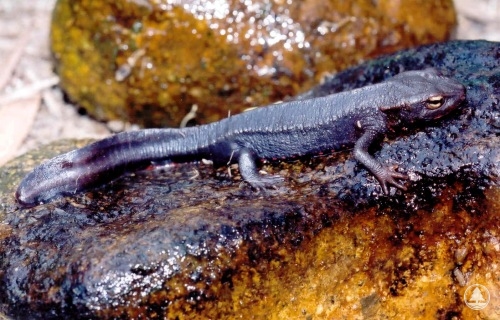 |
| Hong Kong Newt (Paramesotriton hongkongensis) |
Anurans consist of frogs and toads. They have no true neck and the adults are tail-less. They spend their larval stage in water, but the adults are mainly terrestrial. Frogs generally have slippery skin, with webbing between their toes. They mostly live near water bodies and are good swimmers. In Hong Kong, there are 24 species of frogs, including the White-spined Cascade Frog (Amolops albispinus), which has only been recored on Lantau Island. The local frogs differ greatly in size, from the tiny Romer's Tree Frog (Liuixalus romeri), which is about 1.5cm long to the huge Giant Spiny Frog (Quasipaa spinosa), which grows to over 14cm in length.
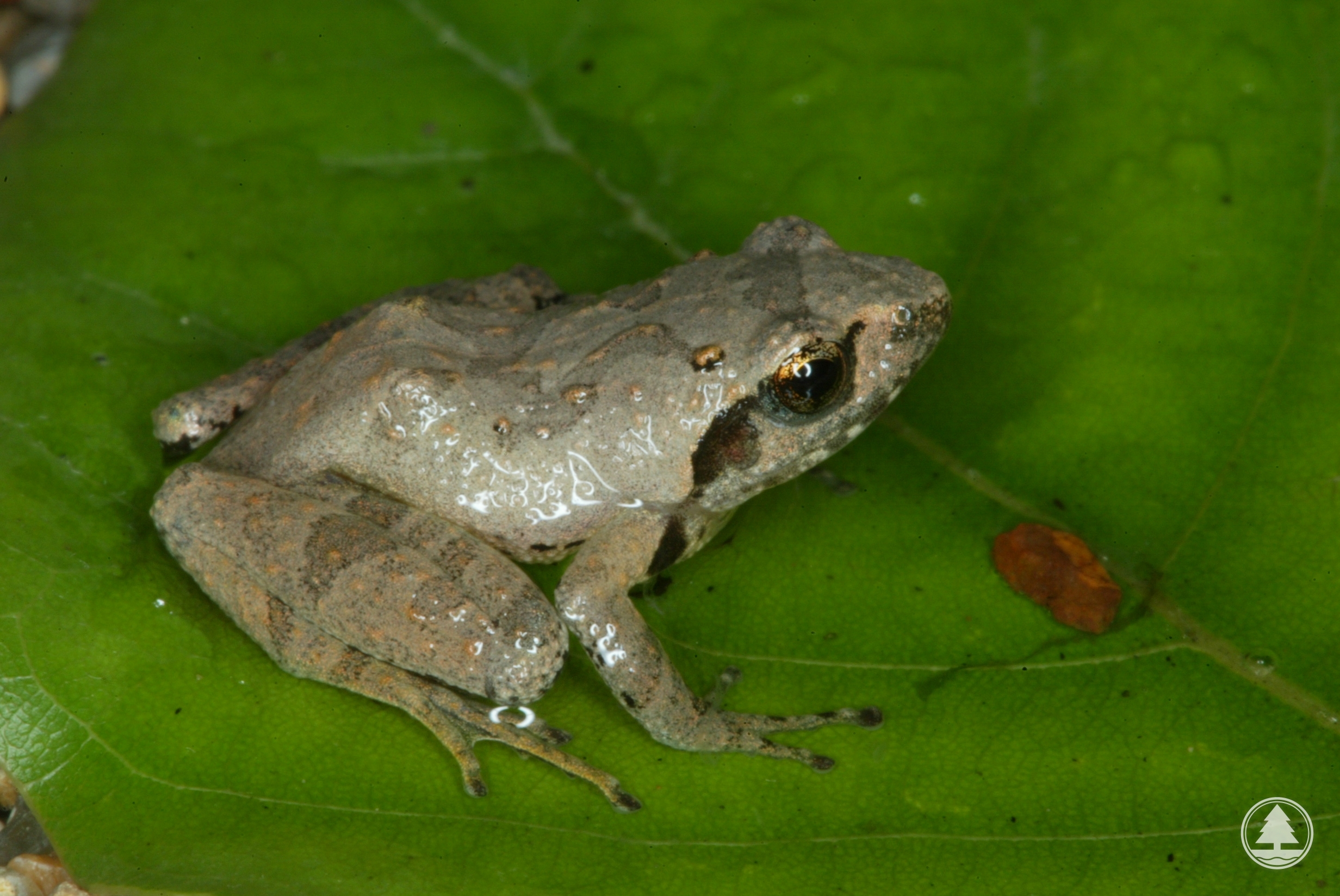 |
| Romer's Tree Frog (Liuixalus romeri) |
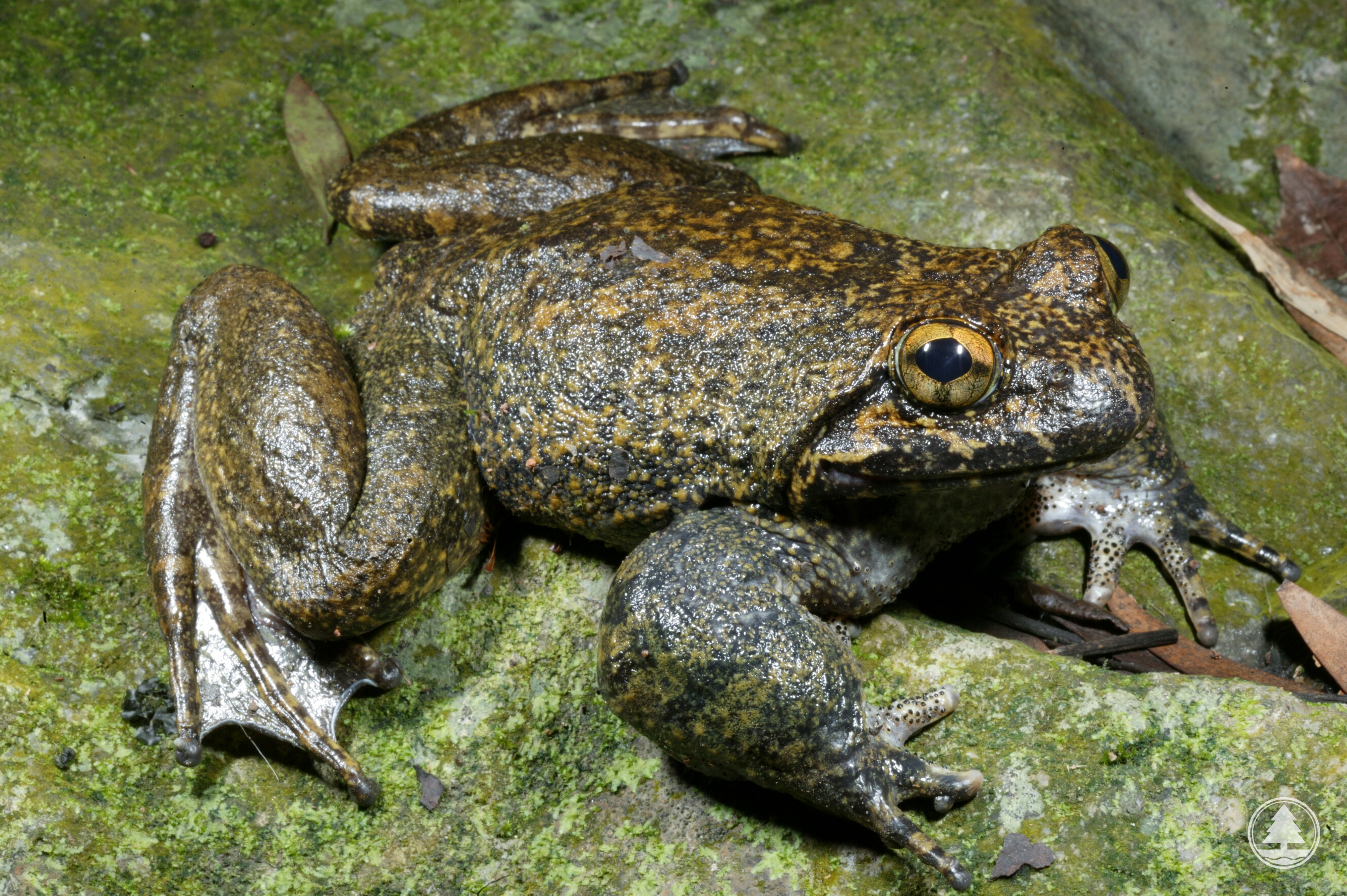 |
| Giant Spiny Frog (Quasipaa spinosa) |
Toads generally have dry, warty skin and no webbing between their toes. In Hong Kong, there are three species of toads, including the common and widespread Asian Common Toad (Duttaphrynus melanostictus), which has poison glands on the sides of the head. The other two species, the Short-legged Toad (Megophrys brachykolos) and Lau's Leaf-litter Toad (Leptobrachella laui), are confined to mountain streams.
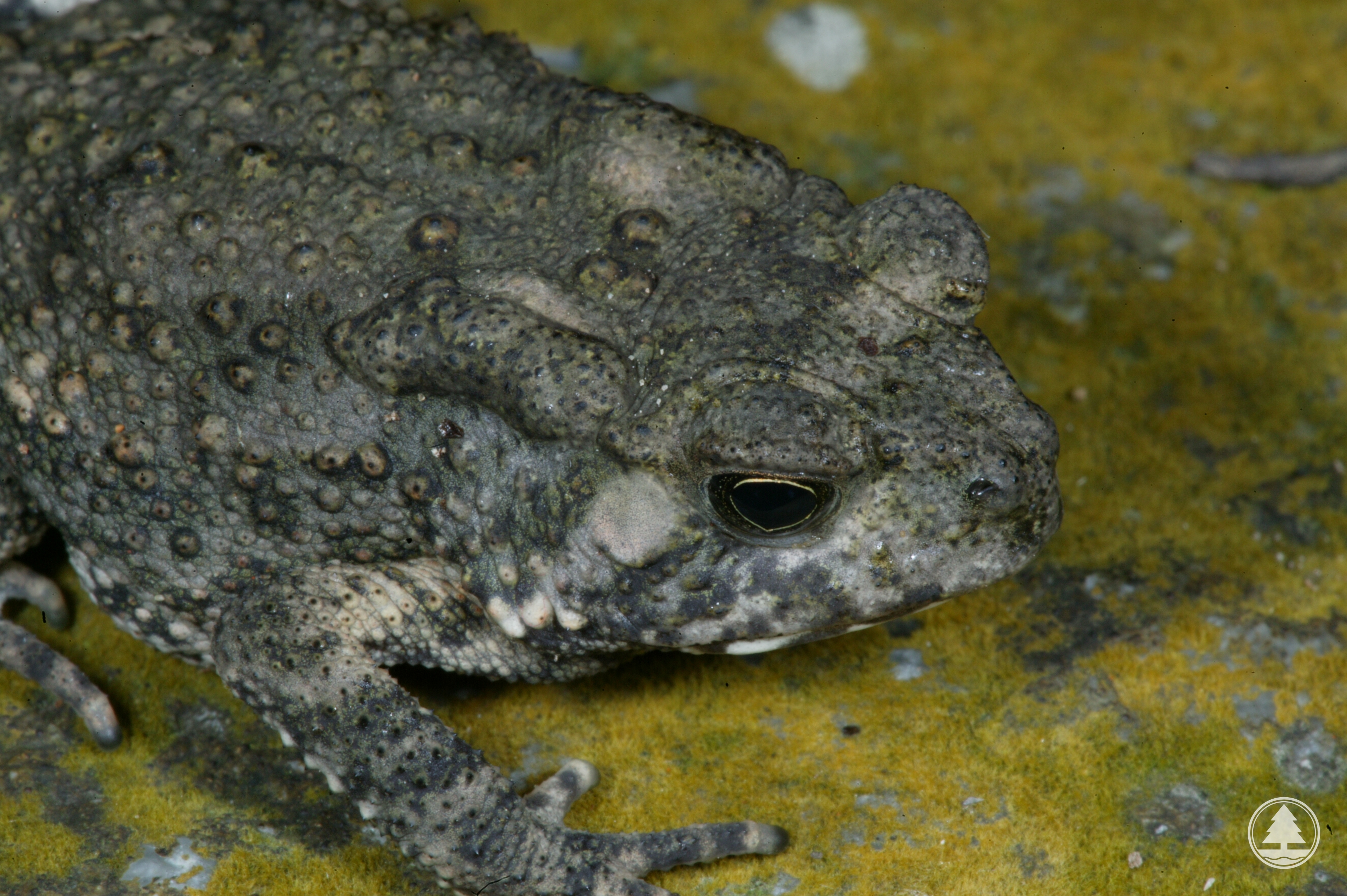 |
| Poison glands of Asian Common Toad (Duttaphrynus melanostictus) |
Diversity of Hong Kong Amphibians
Click here to download the Checklist of Amphibians of Hong Kong.
The amphibian fauna of Hong Kong is rather diverse, accounting for about 7 percent of the amphibian species occurring in China. This is mainly attributed to the presence of a wide range of habitats, from the hillside streams to the low-lying wetlands (such as agricultural fields), offering suitable habitats to both upland inhabitants (e.g. Giant Spiny Frog, Lau's Leaf-litter Toad) and lowland dwellers (e.g. Marbled Pigmy Frog Microhyla pulchra, Spotted Narrow-mouthed Frog Kalophrynus interlineatus). Some widespread and abundant species, such as the Günther's Frog (Sylvirana guentheri) and Paddy Frog (Fejervarya limnocharis), can be found in different habitats at all altitudes. Among the 24 native species recorded so far, only the Romer's Tree Frog is considered endemic to Hong Kong . The Hong Kong Newt and the Hong Kong Cascade Frog (Amolops hongkongensis) were once thought to be endemic to Hong Kong, but were later found in other places of Guangdong Province.
Amphibian Conservation in Hong Kong
Despite their semi-terrestrial mode of life, amphibians are closely associated with water, because water bodies are their breeding ground. Rapid development in Hong Kong has resulted in the loss of many low-lying wetlands which were once important amphibian habitats, and this has led to a severe decline in the populations of certain lowland species (such as the Rough-skinned Floating Frog (Occidozyga obscura), which inhabited the once-abundant, but no longer existing, paddy fields). The species was not found in recent surveys. The pollution of water bodies and acid rain would also affect individual's survival, particularly for the sensitive species, as the permeable skin of amphibians makes them highly susceptible to the pollutants. However, some hardier pollution-tolerant species, such as the Günther's Frog and Asian Common Toad, are still common and, even in disturbed habitats, widespread.
Regarding species conservation, Fellowes et al. (2002) identified 12 species of Hong Kong amphibians to be of conservation concern, either on a local, regional or global scale. The Herpetofauna Working Group (HWG) of the Agriculture, Fisheries and Conservation Department (AFCD) reviewed the conservation status of these species, taking into account the latest results from a territory-wide baseline survey undertaken by AFCD since 2002 and consultation with local herpetologists. With more up-to-date information, the review indicated that many species were under-recorded in the past, and therefore revised the list of species of conservation concern. The species now considered to be of conservation concern include the Romer's Tree Frog and Giant Spiny Frog.
Romer's Tree Frog
Romer's Tree Frog is endemic to Hong Kong, that is, the species is found in Hong Kong but nowhere else in the world. It is the smallest frog in Hong Kong, distinguished by the X-mark on its back. The species occurs on Lantau Island, Lamma Island, Po Toi and Chek Lap Kok. Due to the construction of the Hong Kong International Airport, the population of Romer's Tree Frogs in Chek Lap Kok was collected, captive-bred and subsequently released to suitable habitats in the New Territories and Hong Kong Island. These translocated populations have been closely monitored, and the successful establishment of the released frogs has been confirmed. Romer's Tree Frog is now considered to have a secure population status. Protection of its major habitats, which mostly fell within existing protected areas or areas covered by conservation zonings on statutory land use plans, will safeguard the survival of Romer's Tree Frog. However, the tiny Romer's Tree Frog is still susceptible to threats such as degradation of suitable habitats. Dedicated conservation efforts, in particular species monitoring, will continue to ensure the conservation and survival of this endemic amphibian.
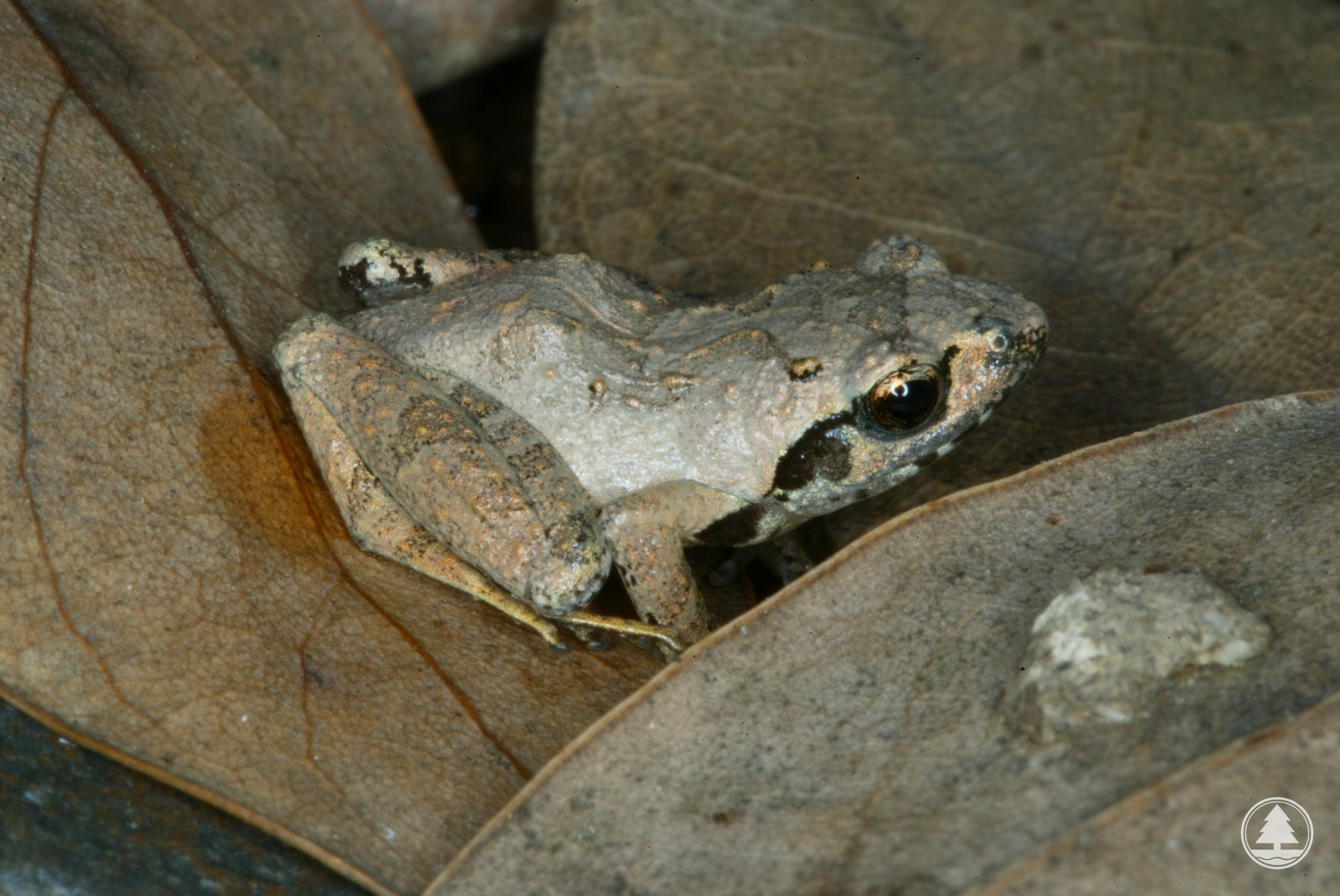 |
| Romer's Tree Frog (Liuixalus romeri) |
Giant Spiny Frog
Giant Spiny Frog is the largest frog in Hong Kong. Its distribution is confined to the mountain streams in Tai Mo Shan area, and it is listed as ‘Vulnerable' in IUCN Red List of Threatened Species. Although the Giant Spiny Frog occurs inside Country Parks, in view of its highly restricted distribution, regular monitoring of the species and its habitats is considered essential for its continued survival in Hong Kong.
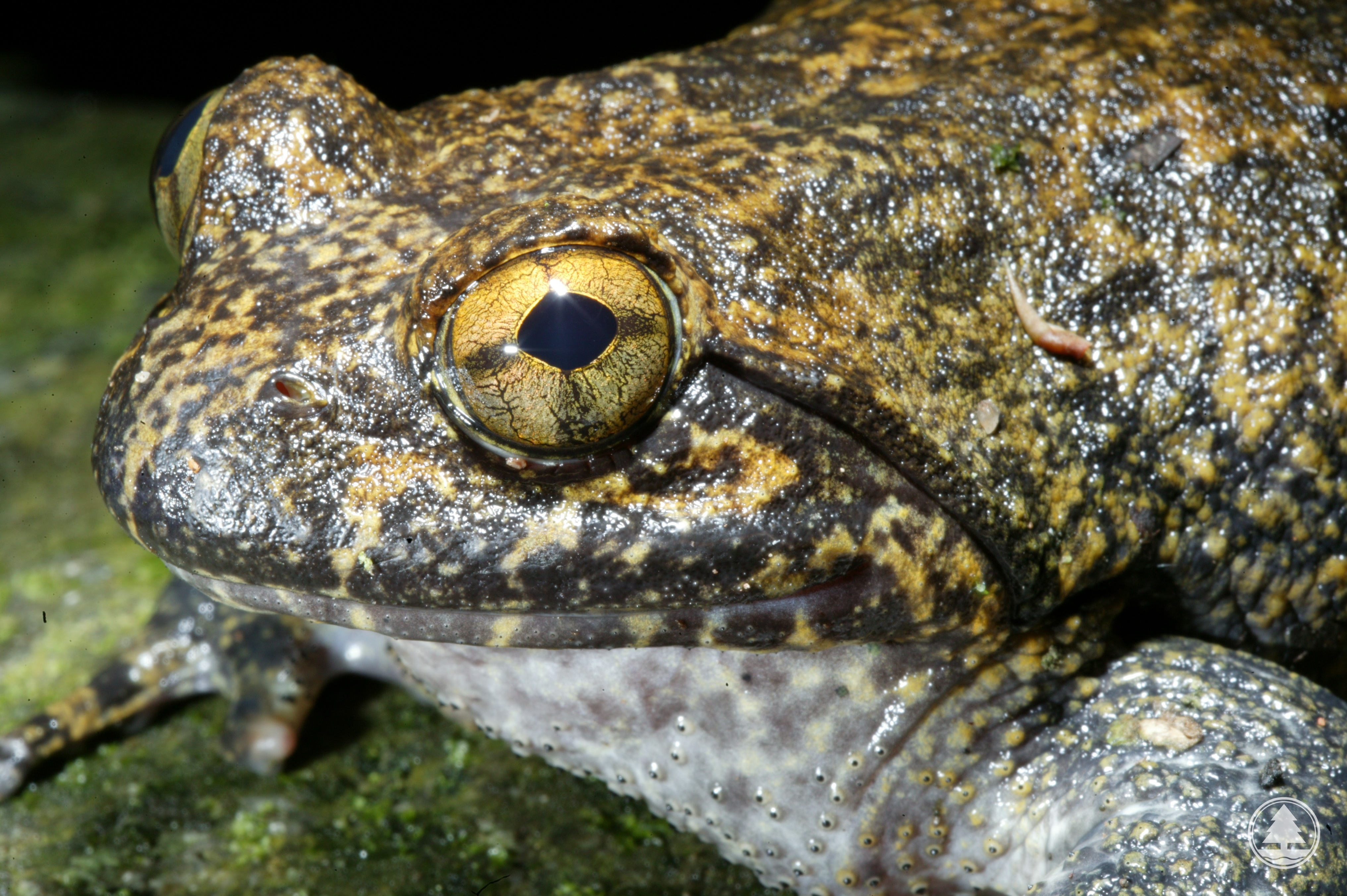 |
| Giant Spiny Frog (Quasipaa spinosa) |
Conservation Measures
The Hong Kong Newt, Hong Kong Cascade Frog and Romer's Tree Frog are protected species listed under the Wild Animals Protection Ordinance (Cap.170). It is an offence to collect or disturb them or their eggs.
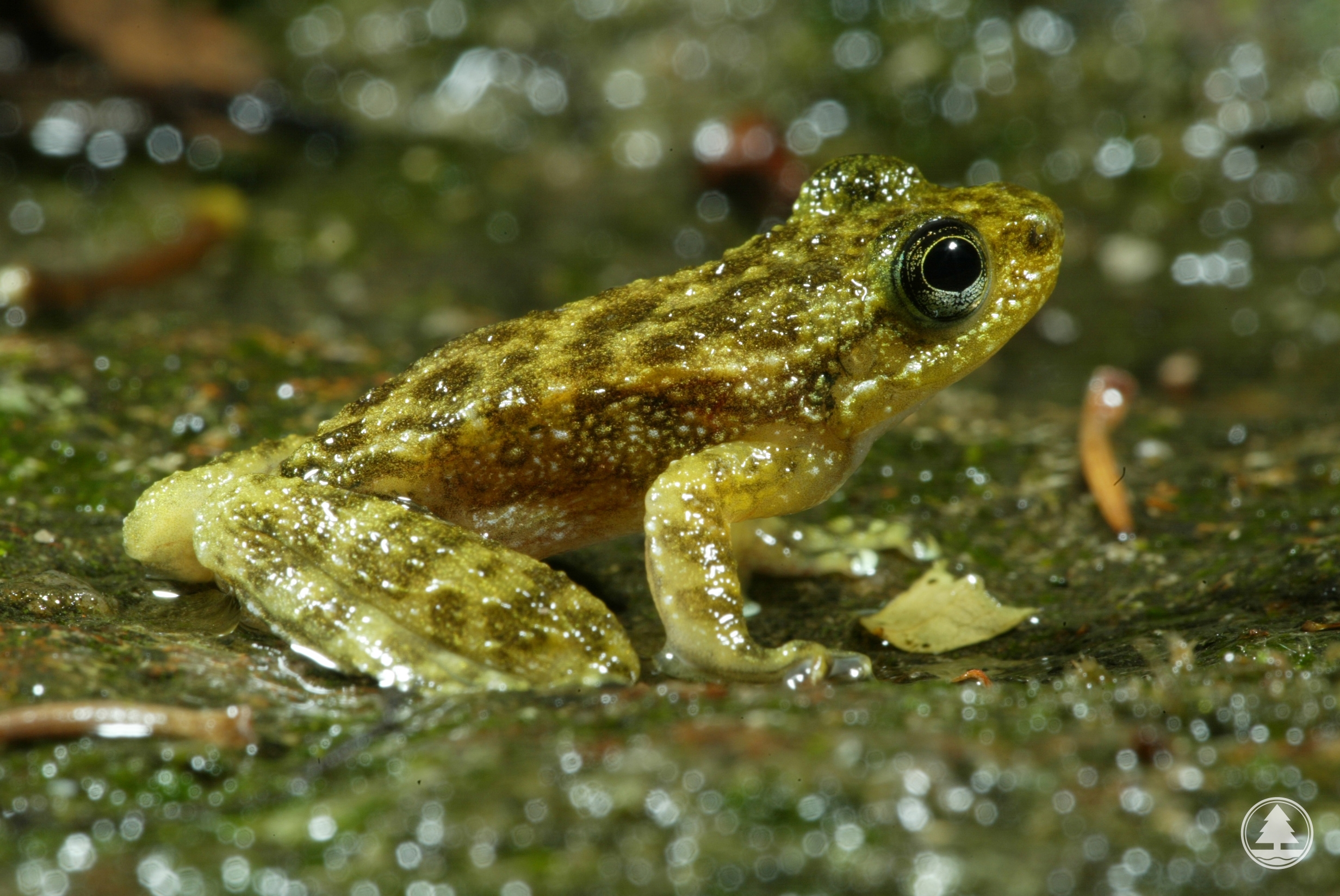 |
| Hong Kong Cascade Frog (Amolops hongkongensis) |
The local amphibians are well represented, either exclusively or partially, inside the existing protected areas such as Country Parks, Special Areas and Sites of Special Scientific Interest (SSSI). These protected areas include some of the important sites for local amphibians, thus safeguarding these sites against threats of development. For example, the seasonally inundated stream and the surrounding forest, plantation and shrubland in Ngong Ping are considered important breeding sites of the Romer's Tree Frog, and therefore have been designated as an SSSI. The streams and the surrounding habitats at Tai Mo Shan, which are the sole habitats for the rare Giant Spiny Frog in Hong Kong, are mostly within Country Park as well as SSSI.
Meanwhile, a species action plan for Romer's Tree Frog has been developed. A major component of the action plans is population monitoring, which includes regular checks on the occurrence of the species and the condition of their habitats.
Public education also plays an important role in conservation. AFCD has published "A Field Guide to the Amphibians of Hong Kong" to enhance public knowledge on this group of animals.
Romer's Tree Frog Species Action Plan 2022-2027
|
To enhance the conservation efforts for the Romer's Tree Frog, AFCD and experts have formulated a species action plan (SAP) to provide a framework of actions with the aim of better protecting this species in Hong Kong, as well as maintaining a stable population and genetic diversity of the Romer's Tree Frog. Actions laid out in this SAP will be carried out, in a period of 5 years from 2022 to 2027, through collaborations with the government's conservation authority, non-government organisations, academic institutions and individual experts. To download the Romer's Tree Frog SAP: Romer's Tree Frog SAP 2022-2027 (English only) (PDF, 739KB) |
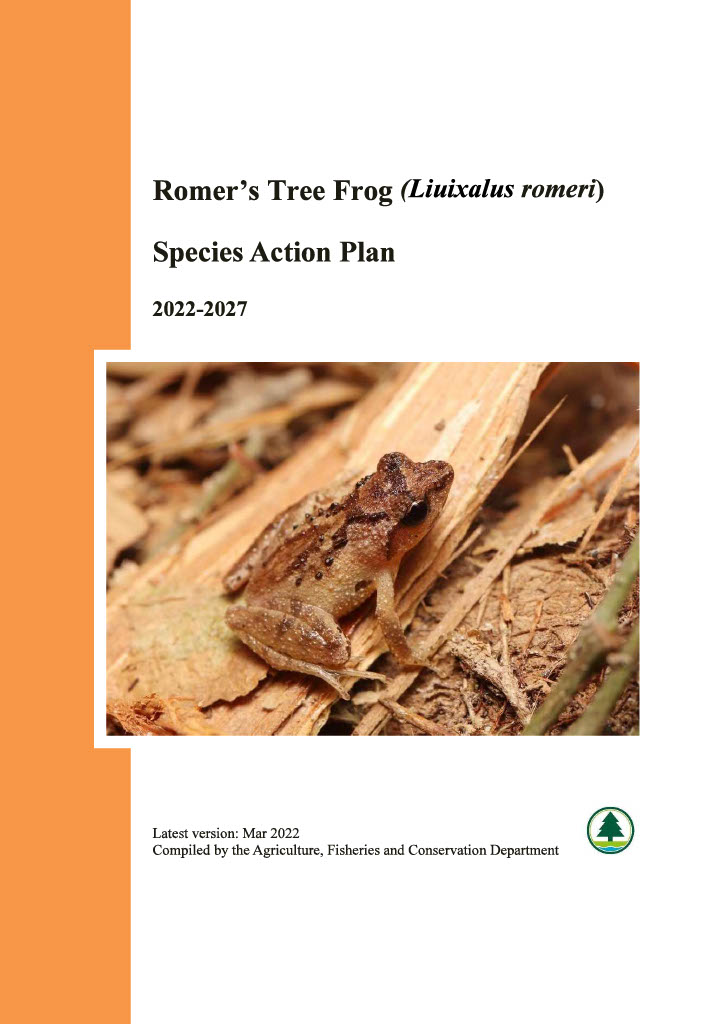 |
Observing Amphibians in the Wild
The effective camouflage and nocturnal habit of most frogs and toads make them difficult to be seen during the day, when they often hide among rocks and crevices, or under leaf litter and bushes. Frogs and toads usually stay near water, so marshes, ponds, streams or wet cultivation fields are good places to look for them. The best time of the year to observe frogs and toads is in the early wet season, when they are more active due to the onset of their breeding cycle. During the breeding season, male mating calls can be heard at dawn or dusk near streams, marshes, ponds and cultivated fields. Eggs and tadpoles can often be seen in water pools or ditches. One can also find egg mass of the Brown Tree Frog (Polypedates megacephalus) suspended on tree branches, or attached to the side of tanks and wells above water level.
The mating calls of different frog and toad species are quite distinct, and so surveying them by listening to their calls is effective during their breeding season. For example, the calls of Asiatic Painted Frog (Kaloula pulchra) resembles the sounds of cow mooing. During the colder months when it is difficult to encounter a frog or toad in the open wild, one may find them seeking refuge from the weep holes of man-made catchwaters.
The Hong Kong Newt breed in the cooler months from September to March, meanwhile most of the frogs and toads become inactive when the temperature drops. During this period, one may easily find the aggregating adults and the newly hatched Hong Kong Newt larvae in the stream. Tadpoles of frogs and toads have a distinctive look from adults. However, the larvae of Hong Kong Newt ia a miniature version of the adults, except that the larvae have feather-like external gills.
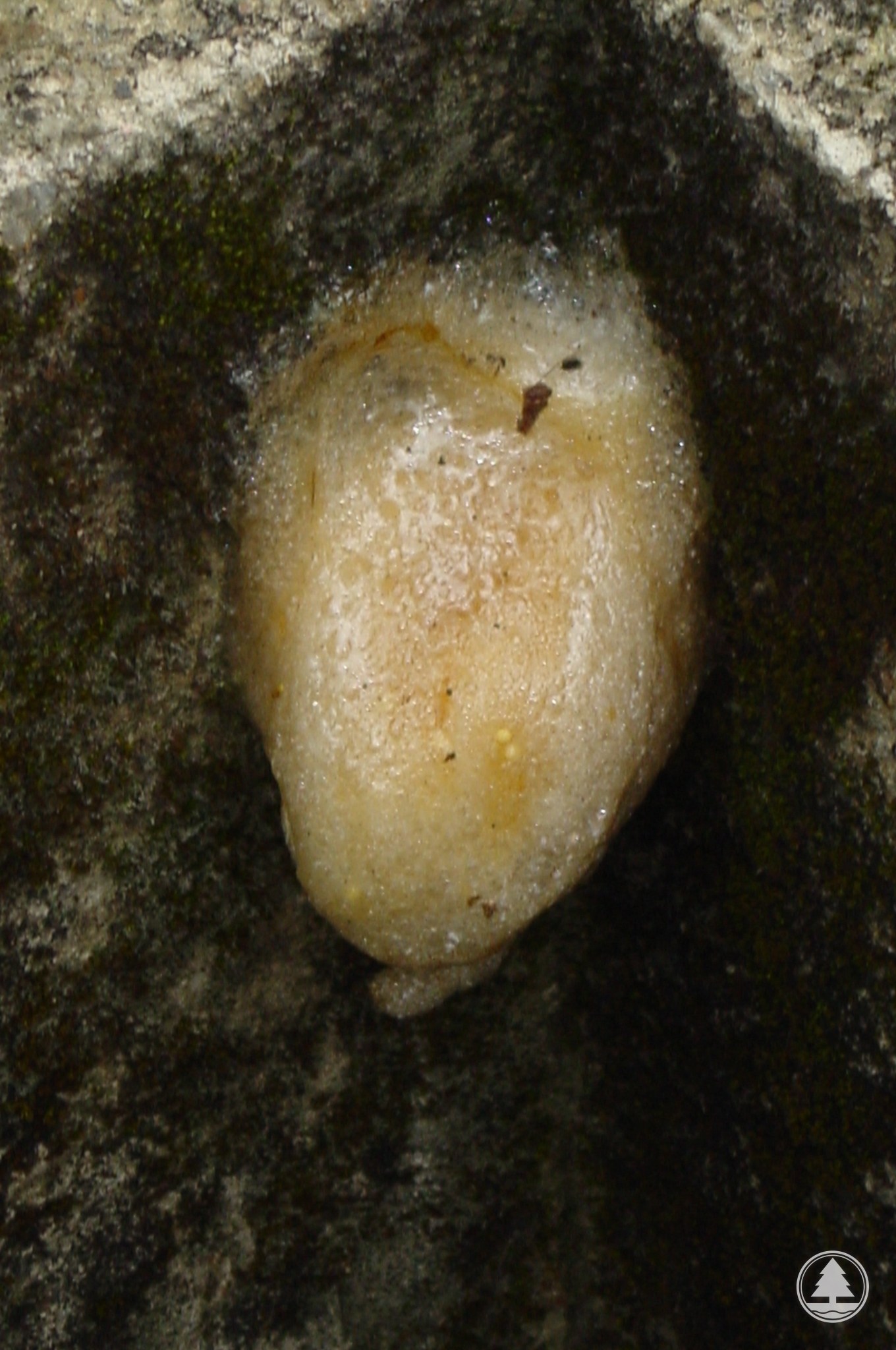 |
| Egg mass of Brown Tree Frog (Polypedates megacephalus) |
Hong Kong Frog Calls
Each species of frog produces its own distinctive calls. We can distinguish one species from another based on their calls. Frog calls serve different purposes, and the most common type of call is the mating call which the male calls to attract the female during the breeding season.
Dos and Don'ts for Amphibians Watching
-
When searching for hiding amphibians, turn over rocks or logs lightly. Always place them back in the original location.
-
When using a torch to look inside holes and crevices, beware of snakes which may also be hiding there.
-
Listen to the calls made by different species, and try to distinguish them from one another.
-
Some species exude irritating secretions through their skin. Wash your hands immediately after touching any amphibians.
-
Do not destroy vegetation, disturb wildlife or their living environment.
-
Do not pollute water.
-
Do not litter.
References
Chan S.K.F., Cheung K.S., Ho C.Y., Lam F.N. and Tang W.S. (2005). A Field Guide to the Amphibians of Hong Kong. Hong Kong: Friends of the Country Parks. 212pp.
Karsen, S.J., Lau, M.W.N. and Bogadek, A. (1998). Hong Kong Amphibians and Reptiles (2nd Edition). Hong Kong: A Provisional Urban Council Publication.
Xie, F., Lau, M.W.N., Stuart, S.N., Chanson, J.S., Cox, N.A. and Fischman, D.L. (2007). Conservation needs of amphibians in China: a review. Science in China Series C: Life Sciences 50(2): 265-276.
Zhao, E. (1998). China Red Data Book of Endangered Animals: Amphibia and Reptilia. Beijing: Science Press.
Zhao, E. and Adler, K. (1993). Herpetology of China. Oxford (Ohio): Society for the Study of Amphibians and Reptiles in cooperation with Chinese Society for the Study of Amphibians and Reptiles.
中 國 野 生 動 物 保 護 協 會 (2000) 。《 中 國 兩 棲 動 物 圖 鑒 》。 河 南 : 河 南 科 學 技 術 出 版 社 。
呂 光 洋 、 杜 銘 章 、 向 高 世 (2002) 。《 台 灣 兩 棲 爬 行 動 物 圖 鑒 》 ( 第 二 版 ) 。 台 北 : 中 華 民 國 自 然 生 態 保 育 協 會 。
楊 懿 如 (2002) 。《 賞 蛙 圖 鑑 》 。 台 北 : 中 華 民 國 自 然 生 態 攝 影 學 會 。
| Back | Back to Top |
![]()